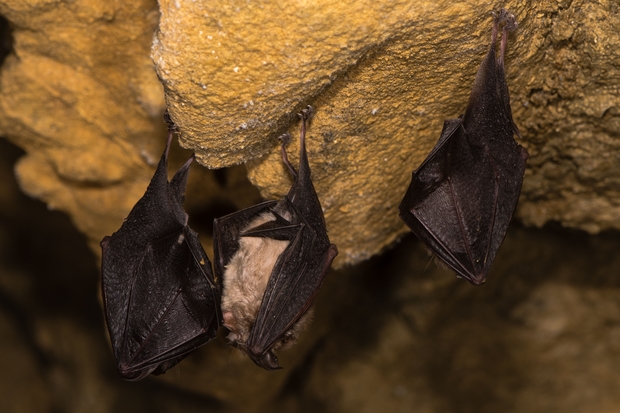
On the 31st December 2019, the World Health Organisation (WHO) was informed of a cluster of pneumonia cases in patients in Wuhan City, China. Within two weeks a novel coronavirus (Severe Acute Respiratory Syndrome-Coronavirus-2 or SARS-CoV-2) was identified to cause the subsequently named Coronavirus disease 2019 (COVID-19) and the genetic sequence was shared with the international community. The serious international public health impact of COVID-19 was reported by WHO at the end of January and by March 11th the outbreak was officially declared as a pandemic.
APHA is a UK government agency responsible for protecting the UK against diseases of animals and plants. Many of the diseases are viral and zoonotic (transmit from animals to humans). APHA scientists are therefore uniquely set up to respond to One Health (animal, human or environmental) threats and establish testing capabilities to detect new and emerging diseases.
The pace at which global virologists responded to this pandemic was incredible. By January 13th 2020, the WHO published a validated test for SARS-CoV-2, and reagents were made available through an international consortium (European Virus Archive Global) of which APHA is a founding partner. APHA staff from across our Animal and Zoonotic Diseases Portfolio rapidly came together, and utilising our extensive scientific knowledge and expertise, initiated programmes to further understand the risk of virus transmission to other animal hosts and establish testing capabilities to allow for critical case management decisions on behalf of Defra.
Preparing to test suspect cases at an early stage of what would become a global pandemic was key to ensure veterinary suspicions of suspect COVID-19 cases could be investigated promptly and reliably.
The emergence of animal COVID-19 cases
As for the previously identified coronavirus related outbreaks in humans (SARS and MERS), an animal source was quickly proposed with horseshoe bats reported as the main suspect due to the close relationship between SARS-CoV-2 and a bat coronavirus. However, sufficient genetic distance exists to suggest an as yet unidentified intermediary animal host.

The highly effective human to human transmission of SARS-CoV-2 was quickly determined to be the most significant factor in the spread of COVID-19 rather than any zoonotic transmissions. However, the transmission of the disease from infected people to their animals (reverse zoonosis) started to be reported from March 2020.
Worldwide, by the end of March, over 750,000 confirmed human COVID-19 cases were officially reported by the WHO, compared to only 2 officially confirmed SARS-CoV-2 cases in pets reported to the World Organisation for Animal Health (OIE): one dog in Hong Kong and one cat in Belgium. Both animals are believed to have been infected by their owners who had COVID-19.
More animal cases have since been reported in a lion, tiger, mink, cats and dogs but are very rare and further studies are required to understand the susceptibility and severity of COVID-19 in animals. Events in mink stand out from others owing to high susceptibility. Research in an infected mink farm has shown that there has been transmission of the virus in both directions, from humans to minks and back to humans. There is, however, no evidence that domestic animals play a role in the spread of COVID-19, whose predominant route of transmission is human to human.

In the UK, APHA works together with public health authorities and veterinary stakeholders, using a One Health approach to share information and conduct risk assessments on disease cases. We continuously scan international developments including intelligence gathering across our global science networks. This is especially true in the current COVID-19 pandemic when a report of a suspect COVID-19 case in an animal is received following contact with an infected human.
Preparing for COVID-19 spread to animals in the UK
At the end of January this year, APHA’s Virology Department started preparing for a potential COVID-19 incursion in the UK animal population by establishing molecular (RT-qPCR: Reverse Transcription – quantitative Polymerase Chain Reaction) and serological (VNT: Virus Neutralisation Test) assays. These diagnostic tests detect viral genetic material from saliva / oropharyngeal swab samples or antibodies from blood of the patient (human or animal).
In order to prepare for any possible suspect cases in animals, staff at APHA began the extensive process of SARS-CoV-2 assay validation which provides evidence on the quality, reliability and consistency of our test results.
Preparation for testing does not end with the test set up and its validation, it requires a system in place from the moment a call for further investigation is received to the moment a result is released. This includes publication of guidance, risk assessments and standard operating procedures for working with potentially infected animals and samples.
At this point, the Government’s focus is to provide testing for SARS-CoV-2 for humans and for APHA to provide confirmation of any veterinary positive test results to the competent authorities Chief Veterinary Officer (CVO), in support of the UK’s international reporting obligations to the World Organisation for Animal Health (OIE).
APHA staff continue to support the NHS by providing testing for human swab and saliva samples. On the veterinary side, COVID-19 investigations, for example by private veterinary surgeons, are only permitted if it is in the best interest of the animal but any positive samples must be sent to the APHA for confirmatory testing.
Receiving our first UK suspect animal case

The time to put our newly validated assays to the test arrived in June.
Following the development of respiratory signs, SARS-CoV-2 was investigated and detected by RT-PCR in a domestic cat in a private laboratory. APHA conducted a follow-up investigation working with the cat’s owner and their private veterinarian.
The owner agreed to a re-sampling of the suspected cat. Follow-up and original samples were received at APHA Weybridge and rapidly tested.
The molecular test confirmed the presence of SARS-CoV-2 virus in the original swabs, and the serological test detected specific antibodies in the blood sample. The results indicated that the cat was exposed to the virus, probably through its proven infected owner. Another cat from the same household tested negative for SARS-CoV-2 antibodies.
Both the cat and its owner have made a full recovery and there was no transmission to other animals or people in the household.
Reverse Zoonosis
In addition to confirming any suspect cases in UK animals, APHA staff have liaised with the Bat Conservation Trust, Natural England and Defra to issue guidance for personnel caring for or sampling animals (pets, captive or wildlife animals) to reduce the risk of reverse zoonoses. It is extremely important that anyone undertaking field work or surveillance, ensures appropriate measures to avoid virus transmission to susceptible animals or to diagnostic samples.
“Tests conducted by the Animal and Plant Health Agency have confirmed that the virus responsible for COVID-19 has been detected in a pet cat in England. This is a very rare event with infected animals detected to date only showing mild clinical signs and recovering within in a few days. There is no evidence to suggest that pets directly transmit the virus to humans. We will continue to monitor this situation closely and will update our guidance to pet owners should the situation change."
Christine Middlemiss, UK Chief Veterinary Officer, 22nd July 2020
Further information
The OIE has produced a factsheet outlining the latest science on infection in animals.
Pet owners can access the latest government guidance on how to continue to care for their animals during the coronavirus pandemic.
Future COVID-19 blogs planned
Please be sure to visit the APHA Science blog site again soon or better still, why not subscribe for instant email alerts. More blogs are planned relating to our work supporting national COVID-19 testing which you may be interested to read.

Recent Comments